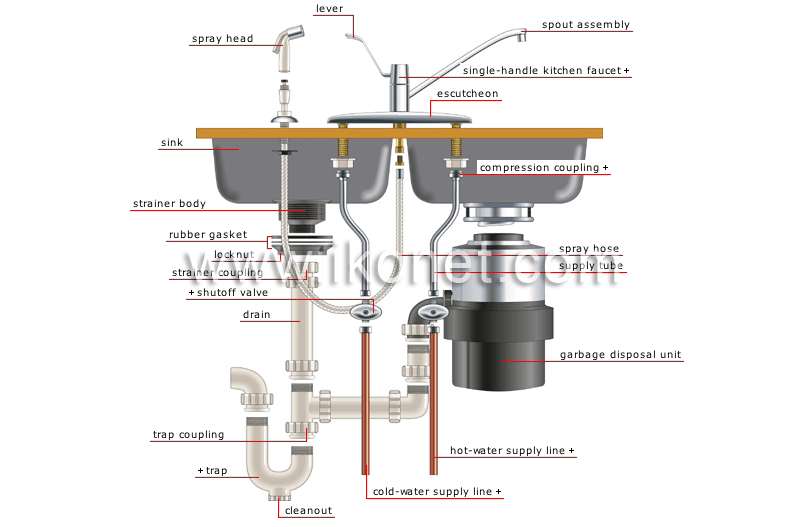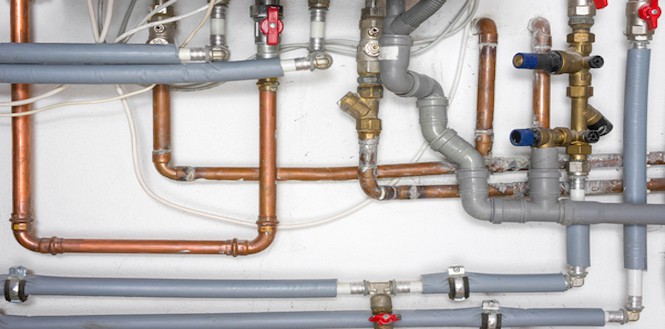Just about every person maintains his or her own piece of advice on the subject of Anatomy of a House: Understanding the Components.

Recognizing just how your home's plumbing system works is essential for every single homeowner. From delivering clean water for alcohol consumption, cooking, and showering to safely eliminating wastewater, a well-kept plumbing system is critical for your family's wellness and comfort. In this detailed overview, we'll check out the complex network that comprises your home's pipes and offer pointers on maintenance, upgrades, and taking care of usual problems.
Introduction
Your home's plumbing system is greater than simply a network of pipelines; it's a complicated system that ensures you have access to tidy water and reliable wastewater removal. Understanding its components and how they collaborate can aid you prevent costly repair services and make certain everything runs smoothly.
Fundamental Parts of a Pipes System
Pipelines and Tubes
At the heart of your plumbing system are the pipes and tubes that carry water throughout your home. These can be made of various products such as copper, PVC, or PEX, each with its benefits in terms of toughness and cost-effectiveness.
Components: Sinks, Toilets, Showers, and so on.
Components like sinks, toilets, showers, and bathtubs are where water is used in your home. Comprehending exactly how these components link to the pipes system helps in identifying problems and intending upgrades.
Shutoffs and Shut-off Points
Valves manage the circulation of water in your plumbing system. Shut-off valves are essential during emergencies or when you require to make repair services, enabling you to isolate parts of the system without interrupting water flow to the entire house.
Supply Of Water System
Key Water Line
The main water line links your home to the local water system or a private well. It's where water enters your home and is dispersed to various components.
Water Meter and Stress Regulatory Authority
The water meter measures your water use, while a pressure regulatory authority makes certain that water moves at a risk-free stress throughout your home's pipes system, preventing damage to pipes and fixtures.
Cold Water vs. Hot Water Lines
Understanding the distinction between cold water lines, which supply water directly from the major, and hot water lines, which lug heated water from the hot water heater, aids in troubleshooting and preparing for upgrades.
Water drainage System
Drain Pipes Pipeline and Traps
Drain pipes carry wastewater away from sinks, showers, and toilets to the sewer or septic tank. Traps prevent drain gases from entering your home and additionally trap particles that might cause blockages.
Air flow Pipes
Ventilation pipes enable air right into the drain system, protecting against suction that might reduce drain and cause traps to vacant. Correct ventilation is crucial for keeping the honesty of your plumbing system.
Relevance of Correct Drainage
Ensuring appropriate water drainage stops backups and water damage. Routinely cleansing drains and keeping catches can avoid pricey repair work and expand the life of your plumbing system.
Water Furnace
Kinds Of Hot Water Heater
Hot water heater can be tankless or conventional tank-style. Tankless heating systems heat water as needed, while tanks keep warmed water for prompt use.
Updating Your Plumbing System
Reasons for Upgrading
Updating to water-efficient fixtures or changing old pipes can boost water high quality, reduce water expenses, and increase the value of your home.
Modern Pipes Technologies and Their Benefits
Discover technologies like wise leakage detectors, water-saving toilets, and energy-efficient water heaters that can save cash and minimize ecological impact.
Cost Factors To Consider and ROI
Compute the upfront expenses versus lasting cost savings when considering plumbing upgrades. Several upgrades pay for themselves with reduced utility costs and fewer repairs.
How Water Heaters Attach to the Plumbing System
Recognizing exactly how water heaters link to both the cold water supply and warm water circulation lines aids in detecting concerns like not enough hot water or leakages.
Upkeep Tips for Water Heaters
Routinely flushing your water heater to remove sediment, checking the temperature level setups, and evaluating for leakages can extend its life expectancy and improve energy performance.
Usual Plumbing Problems
Leaks and Their Reasons
Leakages can take place due to maturing pipelines, loosened fittings, or high water pressure. Resolving leaks without delay protects against water damage and mold development.
Blockages and Clogs
Clogs in drains pipes and toilets are typically caused by purging non-flushable products or a buildup of grease and hair. Using drain screens and being mindful of what decreases your drains pipes can protect against obstructions.
Indicators of Pipes Problems to Watch For
Low tide pressure, slow-moving drains, foul odors, or abnormally high water expenses are indicators of prospective pipes issues that ought to be attended to immediately.
Pipes Maintenance Tips
Normal Evaluations and Checks
Set up annual plumbing inspections to capture issues early. Try to find indications of leakages, rust, or mineral accumulation in faucets and showerheads.
Do It Yourself Maintenance Tasks
Basic jobs like cleaning tap aerators, checking for toilet leakages utilizing dye tablet computers, or insulating exposed pipelines in cool environments can prevent major pipes concerns.
When to Call an Expert Plumbing
Know when a pipes issue calls for expert knowledge. Attempting intricate repair services without proper expertise can cause more damages and higher repair work prices.
Tips for Lowering Water Use
Straightforward behaviors like fixing leakages quickly, taking much shorter showers, and running full loads of washing and meals can conserve water and reduced your energy bills.
Eco-Friendly Pipes Options
Consider lasting pipes products like bamboo for flooring, which is durable and environmentally friendly, or recycled glass for counter tops.
Emergency Readiness
Actions to Take During a Pipes Emergency
Know where your shut-off shutoffs lie and exactly how to switch off the water supply in case of a burst pipeline or significant leakage.
Relevance of Having Emergency Contacts Helpful
Maintain call details for regional plumbing professionals or emergency situation services readily available for quick reaction during a pipes situation.
Ecological Effect and Preservation
Water-Saving Fixtures and Home Appliances
Mounting low-flow faucets, showerheads, and bathrooms can substantially lower water use without giving up efficiency.
Do It Yourself Emergency Fixes (When Applicable).
Temporary fixes like using duct tape to spot a dripping pipe or positioning a pail under a trickling tap can lessen damages till a specialist plumbing professional gets here.
Verdict.
Comprehending the composition of your home's plumbing system empowers you to preserve it efficiently, saving money and time on fixings. By adhering to regular upkeep routines and remaining notified regarding contemporary plumbing modern technologies, you can guarantee your plumbing system runs efficiently for several years to find.
The Anatomy of Your Home s Plumbing System
Understanding the anatomy of your home s plumbing system is essential for any homeowner. It not only helps in identifying potential issues but also facilitates effective communication with professionals when repairs or upgrades are needed. Your home s plumbing system is more than just pipes and faucets; it s a complex network that ensures the efficient and hygienic flow of water in and out of your house. In this blog, we ll dissect the crucial components of your home s plumbing system. For those in Antelope Valley, Brock Plumbing is your trusted partner for all your plumbing needs, ensuring your system functions smoothly and efficiently.
Water Supply System
Main Water Line: This is where your home s plumbing system begins. The main water line connects your home to the public water supply or a private well. Pipes and Shut-off Valves: Pipes distribute water throughout your home. Shut-off valves are crucial for controlling the flow of water and making repairs without shutting off the entire system. Drainage System
Drain Pipes: These pipes carry waste and water away from sinks, toilets, and showers. Vents: Vents allow sewer gases to escape and help maintain proper pressure in the drainage pipes, ensuring efficient flow of wastewater. Traps: Every fixture has a trap, a U-shaped pipe that holds water and prevents sewer gases from entering your home. The most common is the P-trap under sinks. Fixtures and Appliances
Fixtures and appliances are the most interacted with parts of your plumbing system. They include sinks, toilets, showers, dishwashers, and washing machines. Each fixture and appliance has its own supply and drainage connection, ensuring they receive clean water and can dispose of wastewater effectively.
Water Heating System
Your water heater is a crucial component, providing hot water to various fixtures and appliances in your home. It can be tank-based or tankless, with each type having its own set of advantages and maintenance requirements. Regular maintenance is essential to ensure efficient operation and extend the lifespan of the unit.
Sump Pump
In areas prone to flooding or with high water tables, a sump pump is an essential part of the plumbing system. It s installed in the lowest part of your basement or crawlspace and pumps out water that accumulates, preventing flooding and protecting your home from water damage.
Septic System
Homes that are not connected to a municipal sewer system have a septic system and an underground wastewater treatment structure. Understanding how to maintain your septic system is crucial to prevent backups, odors, and early system failure.
Conclusion
Your home s plumbing system is a complex and essential network, ensuring the efficient and hygienic flow of water in and out of your property. Understanding its key components helps in maintaining it properly and identifying issues before they escalate into major problems. For residents in Antelope Valley, Brock Plumbing is dedicated to providing top-notch services, ensuring that every part of your plumbing system is in perfect working order. Trust our team of professionals to handle all your plumbing needs, ensuring your home remains comfortable, safe, and well-maintained.
https://brockplumbinganddrains.com/blog/the-anatomy-of-your-homes-plumbing-system/

As a reader about Anatomy of a House: Understanding the Components, I assumed sharing that topic was a good idea. Remember to take the opportunity to promote this content if you appreciated it. Thank-you for your time invested reading it.
Quote